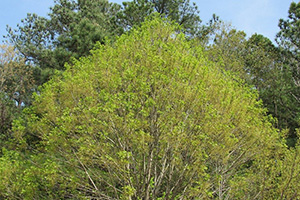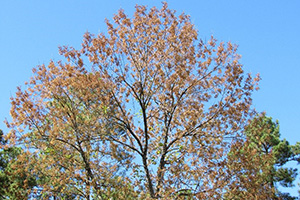Emerald Ash Borer Continues to Move Through North Carolina and Beyond
By Bill Willis and Bill Steinmetz and Paul Johnson
April 10, 2018

It is important that citizens recognize this insect and signs of an infestation. Biological control (wasps, woodpeckers, parasites) of these beetles isn’t wide spread or well established in North America. There are four types of tree treatment: soil injection, trunk injection, bark spray and canopy spray. The defense that NIEHS decided upon was a chemical root flare injection. The treatment is systemic and the chemical will circulate through the tree’s vascular system and into the leaves of the ash. This method minimizes any possible collateral damage. Effectiveness ranges in the lower nineties percentile and lasts for two years against the bark larvae (most destructive phase) and the leaf chewing beetles. Retreatment for continued protection is required on two year intervals. EPA has also joined NIEHS in protecting many of their landscape ash trees around the First Environments Early Learning Center (FEELC). Since the Fringe tree is also susceptible to the beetle, the large trees in the Memorial Garden will be added to the Ash injection program.


Bay 101: Emerald Ash Borer was aired on National Public Radio, hosted by Colleen Kenny, a forester with the Maryland Forest Service, and Paula Shrewsbury, a professor at the University of Maryland, talk about the efforts being used to slow down the emerald ash borer and save ash trees—which have an important role in protecting water quality.
The NIEHS flyer ( Is My Tree Infested by the Emerald Ash Borer?) will help individuals identify and learn more about the problems facing the area ash trees. This is a situation where neighbor can help neighbor by monitoring tree health on their property.



